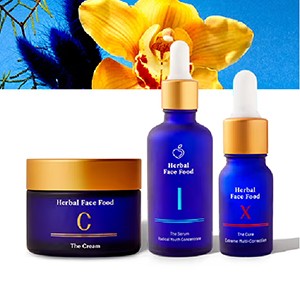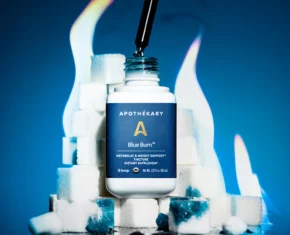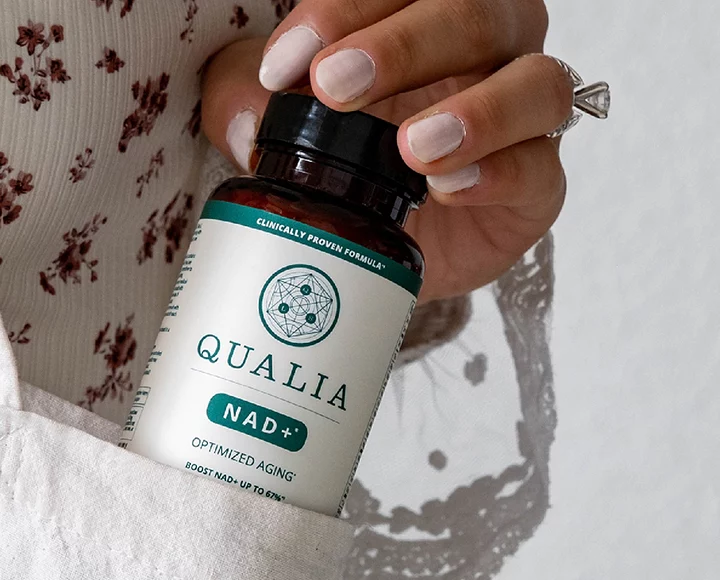Over the last few years, we’ve been learning to reclaim the value of a little dirt in our sterile lifestyles. From the popularity of probiotics and the resurgence of fermented health foods to the shocking ban on those ubiquitous anti-bacterial soaps (that turned out of be bad for our health), the conversation around good and bad bacteria has extended beyond niche wellness and into the mainstream.
As skincare afficionados, one of the most interesting applications of all this bacterial buzz is in the beauty world. Leading the pack, biotech-driven Mother Dirt impressed us last year when we were sent a bottle of their AO+ Mist, packed with – you guessed it – bacteria. The daily mist is designed to uniquely balance and restore skin that’s been stripped and over-cleansed for years. After eons of scrubbing, cleansing, masking and rinsing with tap water, our skin can lose optimal functionality in much the same way that our guts can become imbalanced without the right bacteria.
After incorporating the AO+ Mist into our routine for quite some time, we finally got around to speaking to the source. We never would’ve considered putting bacteria on our skin before trying Mother Dirt — then again, not long ago we wouldn’t have dreamt of using face oil on breakout-prone skin either. The times they are a-changin’.
Like our guts, our body’s biggest organ — our skin — has its own microbiome that needs tending to. If you’ve benefited from learning about your gut microbiome, take the time to learn about your skin’s microbiome too. Here’s our interview with the president of Mother Dirt, Jasmina Aganovic, on the fascinating research behind their bacteria-based product and what we can do about the very modern problem of being a bit too clean.
Q: Thanks to probiotics + gut health education, many of us are aware that there are good ‘bugs’ necessary for vital health. What first piqued your team’s interest in this research?
A: Our scientific founder, David Whitlock was the one who connected the dots between the class of bacteria that we currently work with (which is found in the dirt) and human skin. David developed the hypothesis after a woman who often rode horses asked him why her horses rolled in the dirt at only a specific time of year. All mammals have some sort of ritual of rolling in the dirt. David thought that if it was an evolved need that it must be important for their health.
That’s what triggered him to start looking at connections between the dirt and mammalian skin, and that lead him to this class of bacteria. He started to do his own research and eventually a small team formed around him to validate his hypothesis.
At a very high level, David believed that this class of bacteria was extremely important to human health, that it was part of the skin’s ecosystem, and that it had a broad influence on the skin and potentially more beyond that. He believed that we had lost this class of bacteria because of a lack of time outdoors and the introduction of a lot of modern chemistry, specifically some strong surfactants like SLS and SDS, as well as preservatives which are common in modern personal care products.
David’s hypothesis was that if these bacteria used to be on our skin they must be important for us from a health perspective because we evolved with them. The fact that we’ve removed this essential bacteria and now happen to live in an age of inflammation is key to understanding their value.
At minimum, David believed that this bacteria could improve how the skin looks and feels, and ultimately this triggered two things for us: one being the clinical research of our clinical partners AOBiome Therapeutics — they are doing pharmaceutical research with the FDA on a variety of inflammatory skin disorders as well as other more systemic issues. Two, the consumer-facing side of our business which had not been a planned part of things.
Q: What are the most compelling facts on bacteria and skin health in your research so far?
A: Something that a lot of people don’t know about are keystone species. A keystone species only needs to be present in small amounts to exert a broad impact. Our class of bacteria, which is ammonia-oxidizing bacteria, is a keystone species that doesn’t have to be present in a very large amount to exert a very large, rather disproportionate impact on the rest of the ecosystem that’s behind it.
We have been told that bacteria are bad, especially certain types of bacteria like staph and P. acnes. We believe that getting rid of them will ensure that, for example, we don’t get acne. Researchers have actually found that virtually every person has some form of P. acnes on their skin, but not everyone has acne. It’s not about the presence or absence of a “bad bacteria” that creates a “bad” condition, it’s actually a lot more about what’s happening within that complex ecosystem.
What other bacteria are there? What sort of influence are they exerting around one another? If it’s a stable ecosystem they’re keeping everyone in check and everyone is doing their job. If it’s not a stable ecosystem, it creates the opposite opportunity for certain types of bacteria that are labeled as “bad” to actually become bad and wreak havoc and cause issues.
People have thought of bacteria in terms of ‘good’ and ‘bad’, and, as a result, have focused on sterilizing to get rid of this bacteria. Sterilization has only propagated the destabilization of skin and created potentially more issues for us than solutions.
The whole microbiome, whether externally or internally, has more to do with balance than the presence or absence of specific bacteria. I’ll add that the good versus bad labels are not always completely accurate. The context definitely matters because it’s the environment that dictates whether certain bacteria becomes harmful. I’ll also share that there are like 1,400 bacteria that have been found to be pathogenic or harmful in some way, but there are literally hundreds and hundreds of millions of bacteria that exist and we don’t yet know what they do. We’ve judged all of bacteria as a whole on just a few data points when you look at it from a statistical standpoint. The idea of good versus bad bacteria is definitely an idea worth challenging.
Q: There is a cultural obsession with cleanliness – and we’ve just begun to understand the ramifications of taking things ‘too far’. Talk to us about how that’s changing.
A: We think a lot about this topic. People are finally taking a step back and making the following observation: we’re cleaner than ever, we have more products than ever, and yet we seem to have more issues than ever before.
Sensitive skin, for example, is one of the fastest-growing categories despite all of the lotions that are available. There has been no shortage of product, there’s been no shortage of alternative approaches, and there has been — particularly in the modern developed world like the United States and United Kingdom — no shortage of access to hygiene, and yet the numbers have not gone in the direction we would expect. Sensitive skin is one example, but there are other examples that you can pull around asthma and eczema and acne and things along those lines. These are all increasing, actually, and skin issues, in particular, are much more prevalent than they were just one generation ago. I think there are a lot of people who are taking a step back, making this observation, and sort of thinking about why and what they’ve missed.
This notion of the microbiome and bacteria ends up being a very provocative one. It presents another approach, but it also simultaneously presents a reason the previous approach did not work. That’s creating this really interesting synergism around what is “too clean” and what is a clean that actually means healthy.
All that being said, we’re not advocating that people stop some very basic hygiene practices. Keep on washing your hands before food prep and after the bathroom, when you’re in the hospital you still have to be very careful and make sure you’re using antibacterial products to stay clean and healthy in that type of scenario. Those types of standard recommendations absolutely exist. We don’t have to take it to the other extreme.The reality is that healthy clean exists somewhere in the middle.
Q: Let’s talk about personal hygiene. How can we boost our skin’s biome while still keeping socially acceptable levels of hygiene?
A: Answering this requires getting to the heart of what does getting dirty really mean. Getting dirty used to mean getting outside on the farm and getting filthy because we were spending much more time outside than we are today. Getting dirty in an urban environment means something really different. It might mean exposure to pollution, it might mean getting sweaty on a hot summer day. What does getting dirty really mean?
We need to reconsider what we’ve been taught our whole lives: we need to shower and bathe every single day; we need to lather up head to toe; we need to wash our hair regularly; we need to start using deodorant at a certain age otherwise we’ll smell. The reality is we should police ourselves a bit on this. For people that go to their office by car and back and then shower — how dirty is that person actually? Do they really need to lather up head to toe? Probably not.
We’re not advocating that people stop showering, but do consider your product usage. If you’re going to lather up, do so on the areas that you did actually get dirty. Where did you get sweaty? Probably your underarms for example, so lather up there and rinse away with water. Water will be remarkably effective at rinsing the rest of your body. You probably don’t need to lather up your forearms or your knees.
Q: We’ve used your AO+ Mist and our skin felt much calmer with a good amount of hydration – there’s a vitality that comes to the surface. What are you hearing from Mother Dirt customers?
A: About 50% of our users who start to use the spray as a deodorant find that they can stop using deodorant. This is surprising and exciting and life-changing for some people — it’s a weird thing to think about not having to use deodorant anymore.
When people find that their skin is doing better on its own with less product after using AO+, it creates this sense of freedom from products that they didn’t even realize they felt like a slave to. They felt like they had to put on a certain amount of some super rich moisturizer, and they had to use a mask every several days, and they had to do XYZ otherwise their skin wouldn’t look good or feel good or they’d have some sort of an issue. The freedom that’s created is a pretty exciting and thought-provoking one for many.
Q: Why are probiotics such a good match for some of the most common challenging skin conditions?
Our clinical partner AOBiome Therapeutics is doing the really exciting research there. Acne is considered a disease — and so needs to be regulated by the FDA, which means drug trials. In essence, this is what AOBiome Therapeutics is doing. If they are successful it would mean that there will be a product on the market that contains a live bacteria to treat acne (which we always thought was caused by bacteria). There would also be no side effects, which is a direct contradiction to many of the other acne drugs out there now.
The microbiome is an area of a lot of potential for a lot of different researchers because it hasn’t been tapped — people haven’t believed that bacteria actually dictate as much as they do.
Thinking about balancing bacteria a very radical new way of thinking in skincare. It’s not more chemistry, it’s not about killing, it’s not about applying a steroid. It’s very much focused on the life that is on your skin and how you can enable it to do what it was originally there to do.
Q: What do you say to skeptics on the topic of bacteria for skin health?
A: I think that the cultural bias against bacteria being a bad smelly thing runs really deep and it’s going to be a while before it’s more accepted as common knowledge.
I’m optimistic because we’ve seen a lot of progress in other categories. We’ve seen a lot of progress with the gut microbiome. For example, some physicians are already prescribing probiotics along with antibiotics. Kombucha is something you can get at your drugstore or any grocery store. This is tremendous progress in a fairly short period of time, like five years.
For most skeptics, trying the product converts them. When you spray AO+ on their hand, for example, you can see that it looks and feels just like water and that it doesn’t have a smell to it. Clinical studies about what happens when we restore bacteria to the skin are interesting to many. We’ve been able to measure shifts in the microbial ecosystem of the skin, and we’ve been able to measure changes in the look and feel of the skin as a result of reintroducing that bacteria.
Q: Where do you think the future of all this good bacteria research is going?
A: The acknowledgement that our body is so much more of an ecosystem than we had originally believed, that things are so much more interconnected than we had believed and that we need to start treating ourselves with that as a fact. Recognizing that the gut affects what’s going on on the outside of our body and that what we eat definitely affects the microbes in on and around us, and that it affects potentially different organs around our body and things like that. It’s really an acknowledgment of the sheer ratio of the size of this ecosystem relative to the actual number of human cells – we’re outnumbered by bacteria by about 10:1.
The unicorn that many people are after in the field of the microbiome, is answering this question of “what is the perfect, healthy microbiome?” What does it look like? Once we understand what that looks like, we can figure out a way to make everyone’s microbiome look that way.
Personalized microbiome treatments are also fascinating — tailoring a specific ingestible like a drug that is very tailored to that person’s gut microbiome.
Q: Any tips on using the AO+ Mist?
A: The AO+ Mist is the only product that we make with live bacteria; the other products (our cleanser, our moisturizer and our shampoo) don’t contain the bacteria but they’re formulated in a way to be friendly to the ecosystem of the skin, so you can use them all together.
Use the mist as the last step after any makeup or SPF. Any preservatives in previously applied products will have absorbed into the skin and been diffused – and so not negatively affect the bacteria. What typically ends up happening then as people start to see results, is they go to our other microbiome-friendly products and they start to swap things in. They swap out their conventional cleanser for our biome-friendly cleanser, then they swap out their conventional moisturizer for our biome-friendly moisturizer and all of this essentially ups the ante on the results.
This post is brought to you in partnership with Mother Dirt.
Try AO+ Mist with our exclusive offer for TCM readers!












